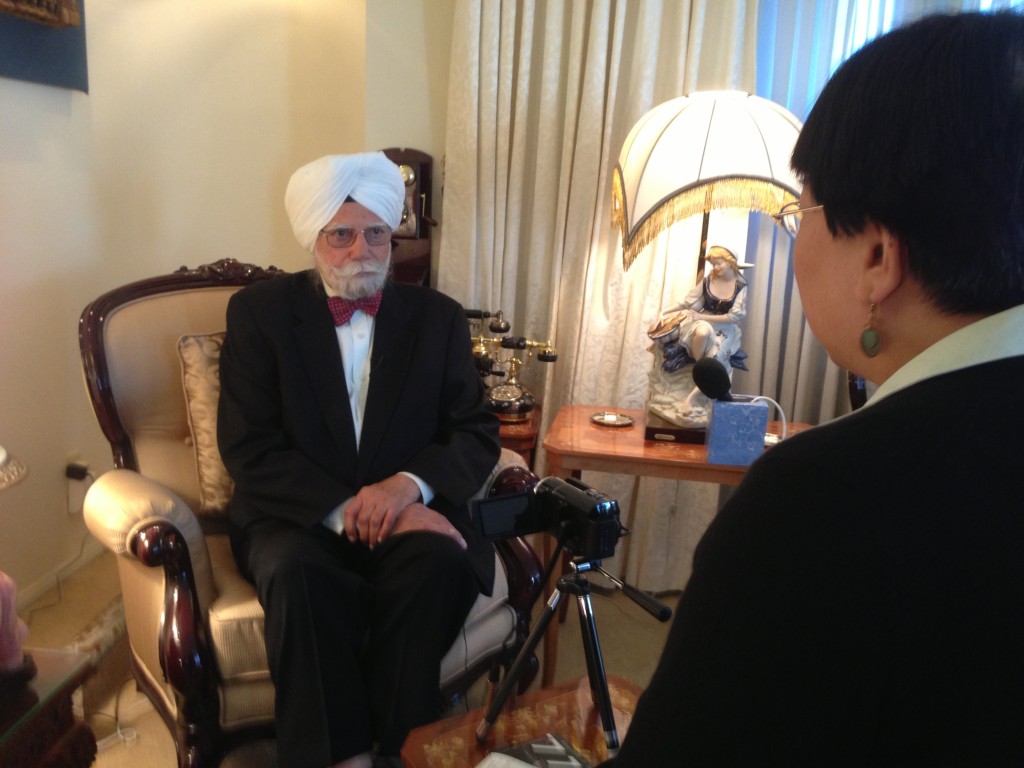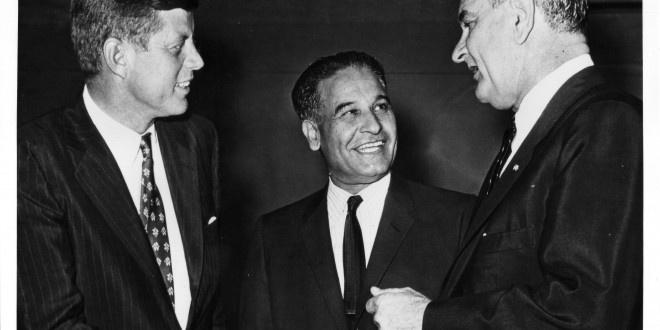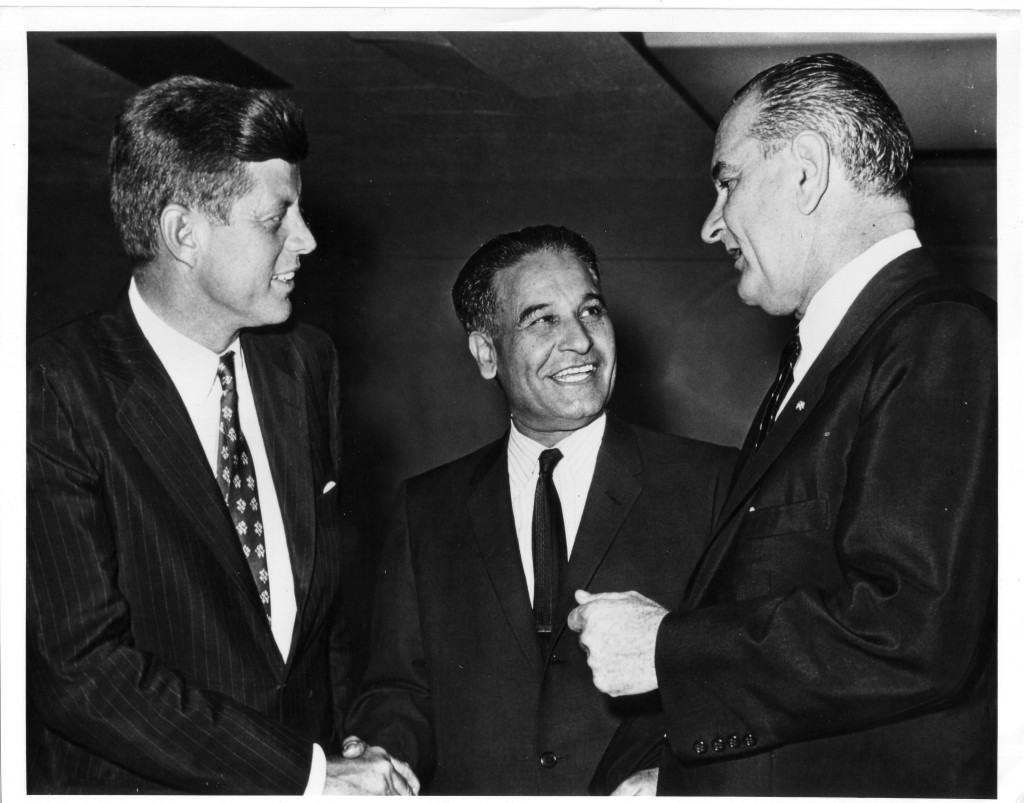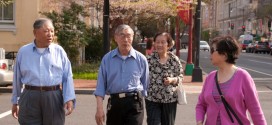By Aria Danaparamita
He was the first Asian American elected to Congress, yet few know his name. Raised in a small town in Punjab before Indian independence, he was inspired by the speeches of Woodrow Wilson and Abraham Lincoln and decided to set sail to America to study. It was 1920. 37 years later, he was elected to the U.S. House of Representatives. Meet Dalip Singh Saund.
Congressman Saund is the subject of an upcoming bio-documentary: Dalip Singh Saund: His Life, His Legacy, produced by E. Samantha Cheng and the team at Heritage Series, in conjunction with partners Asian Pacific American Institute for Congressional Studies (APAICS) and the US Capitol Historical Society (USCHS).
“Dalip Singh Saund did so much for the American people, but he’s just a footnote,” E. Samantha Cheng says. “We want to take him out of the footnote and put him on the page of history.”
Congressman Saund was the first Asian American and the first Sikh elected to the US Congress. Yet having only served three terms in Congress between 1957 and 1963, he is relatively little known.
“So few people know about Dalip Singh Saund, even within the community from which he originates,” says Jasjit Singh, Sikh American Legal Defense and Education Fund (SALDEF). “His story is truly remarkable, especially in a time when so few Asian Americans were involved in politics and there was widespread discrimination of this community.”
The film, the first to document Saund’s life on screen, will bring forth Saund’s lasting legacy for America today and, frankly, his life is one remarkable story.
“As the first Asian American elected to Congress, Dalip Singh Saund was a leader for many immigrant communities,” said Simran Kaur, Sikh Coalition.
Though Saund came to study agriculture at University of California Berkeley and wound up with a PhD in Mathematics, he actively engaged with civic issues, both locally and internationally. But life as a Sikh immigrant then wasn’t easy. Saund arrived in America at a time of great prejudice against immigrants. The Asiatic Barred Zone Act specifically prohibited Asian nationals to naturalize as US citizens.
Faced with social and institutionalized discrimination, Saund was unable to secure a teaching job. He moved to Imperial Valley, an agricultural community near the border with Mexico, and worked as a farmer. There, Saund began to build himself an American life, and a family. He rose to become a leader in the South Asian American community.
“Saund was an activist who fought against laws that prevented the path to citizenship for many immigrants,” Kaur states. “He advocated for the Sikh and South Asian community’s voice to be included in laws and policies that impacted their daily lives.”
In what became a groundbreaking victory, Saund helped lobby for citizenship status for Indian and Filippino immigrants. The Luce-Celler Act was signed into law by President Harry Truman on July 2, 1946. Saund himself became a US citizen three years later.
Becoming increasingly well respected in his community, Saund was elected as a judge in Westmorland. From there, his political life grew. To the surprise of his family, he announced in 1955 that he would run for the U.S. Congress.
His road to Congress was a nationally watched race: he was going against the wealthy and well-connected world-famous aviatrix Jacqueline Cochran Odlum. But Saund, representing the humble, working class, ultimately won the district. On January 3, 1957, Saund became the first Asian American, the first Indian American, and first member of a non-Abrahamic faith to be sworn into the US Congress.
“Dalip Singh Saund: His Life, His Legacy” reflects on how Saund resiliently overcame the toughest adversities to rise to the steps of Congress. But Saund’s hard work did not stop there. In Congress, he fought for everything from water rights for his constituents to the Equal Rights Amendment to the influential Foreign Assistance Act.
Saund’s Congressional career was cut short when he suffered a stroke in 1962 and never returned to public life. But in one life Saund broke barriers not only for Asian Americans and other immigrant communities, but served as an inspiration for all Americans who believed in hard work and equal opportunities. As Representative Mark Takano said simply in the documentary, “I just found that to be an incredible story.”
Cheng’s production team traveled across the country to track down Saund’s remaining contemporaries. Piecing together oral histories, family photographs, and rare footage of Saund himself, the film traces his life and the mark he left on those around him.

“I do this project because it’s important that we not lose this history,” Cheng says. “This long-form narrative also allows me the opportunity to go beyond a soundbite and not just preserve history but celebrate the people who came before us.”
For the filmmakers, the journey was an incredibly enriching one.
“At first he represented an important historical person who was little known; as I’ve worked on this documentary I’ve come to be personally inspired by Saund’s ideals, perseverance, and ability to build bridges, even with his detractors,” Associate Producer Anastasia Walsh says.
Saund’s story continues to resonate today.
“Sikh Americans have been in America for over one hundred years and are part of the American fabric, from coast to coast, working in every profession, serving in our armed forces, holding important positions in American political and civic life, and even leading efforts to promote civil rights for all Americans,” claims Kaur.
“Unfortunately, Sikh Americans continue to fight against injustices that exist in the US today – including school bullying, racial and religious profiling, workplace discrimination and hate crimes. The Sikh community has evolved in meaningful ways – we contribute to the diversity that is America today but there is a lot that remains to be done to ensure that all Americans are treated equally.”
The film will be released for select screenings in early 2014.
“I hope that this documentary will raise awareness about Dalip Singh Saund and inspire viewers to see that they need to claim their part in the American story as Dalip did in the 1940’s and 50’s,” concludes Singh.
- Dalip Singh Saund Photo Courtesy: Eric Saund
 Asian Fortune Your source for all things Asian American
Asian Fortune Your source for all things Asian American




